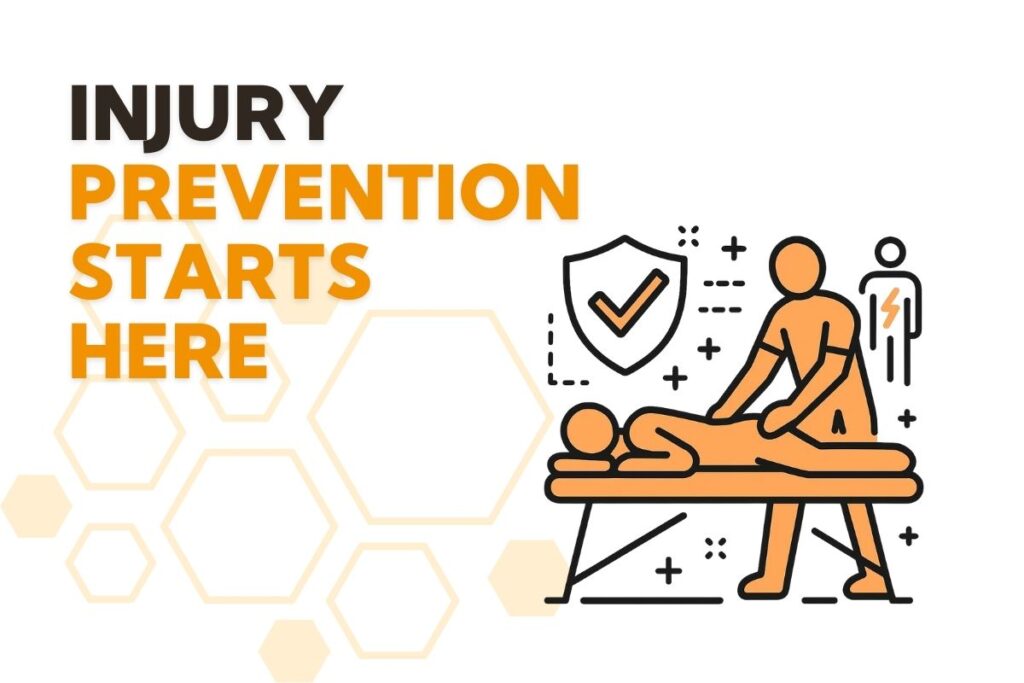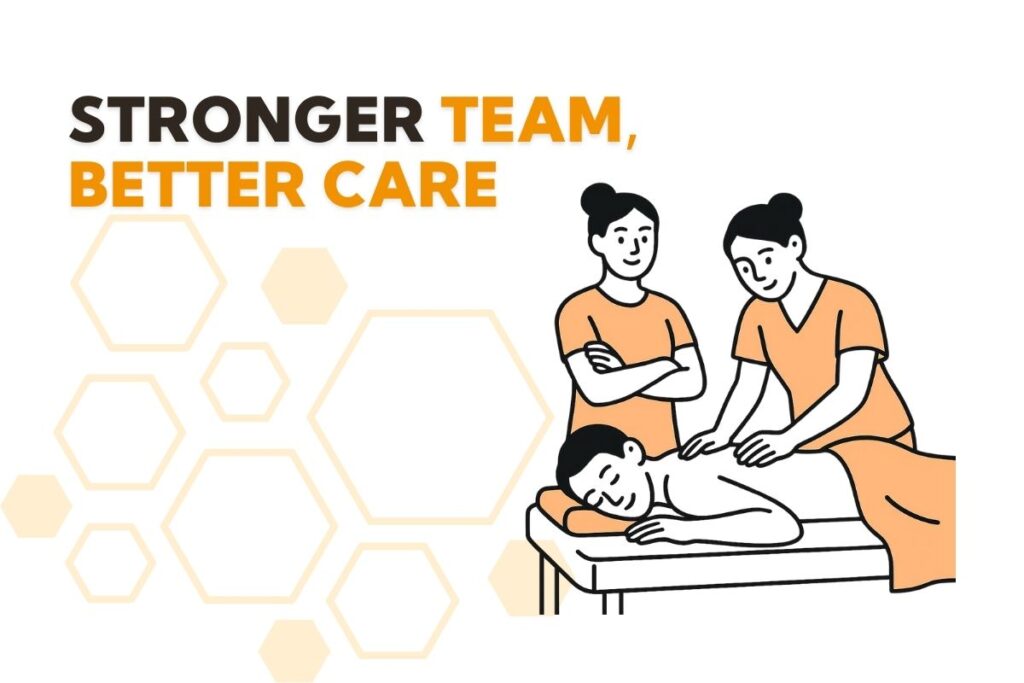When massage therapist injuries go unchecked, your clinic suffers
Massage therapist injuries are a leading cause of burnout, lost income, and early career exits in the industry. Studies show that up to 80% of massage therapists experience work-related pain or injury within the first 5 years of practice. For clinic owners, this isn’t just a personal issue for staff—it’s a direct threat to client satisfaction, team morale, and long-term revenue.
Most clinics don’t realize how much massage therapist injuries impact their bottom line until it’s too late. When a key therapist is forced to reduce hours or leave altogether, the ripple effects can be felt throughout your operations—from booking gaps and urgent hiring to client retention issues. The solution? Proactively address and prevent massage therapist injuries before they become critical.
The Most Common Injuries Facing Massage Therapists
Chronic injuries are more common than acute ones
Massage therapy demands repetitive, high-force movements that put intense stress on specific muscle groups and joints. Without proper prevention strategies, even experienced therapists can find themselves sidelined.
Top injury types include:
- Carpal tunnel syndrome – caused by sustained wrist flexion and pressure
- Thumb and finger strain – often from trigger point or deep tissue work
- Forearm tendonitis – due to repetitive gripping and squeezing
- Neck and shoulder tension – resulting from poor posture or overextension
- Lower back pain – a common result of improper weight distribution
These massage therapist injuries rarely appear overnight. They build up over months or years, eventually making it impossible to work without pain. That’s why early intervention and daily prevention are non-negotiables for clinic longevity.
Building a Strong Foundation with Ergonomics and Body Mechanics
Good technique isn’t just about client outcomes—it’s therapist survival
Ergonomics plays a pivotal role in preventing massage therapist injuries. It’s about designing the work environment and approach to fit the worker, not the other way around. Proper body mechanics ensure that therapists use their full body weight—not just hands and wrists—to deliver consistent, effective pressure.
Ergonomic best practices for massage clinics:
- Adjust massage table height to elbow or hip level to prevent overreaching
- Use wide stances and core engagement to shift weight, not strain joints
- Align shoulders over hands during pressure applications to protect wrists
- Teach neutral thumb and wrist positioning to reduce inflammation risk
These techniques should be second nature. Yet in many clinics, they’re learned once during training and then slowly eroded by time, speed demands, and bad habits. Ongoing retraining is key to keeping massage therapist injuries at bay.

Daily Prevention Strategies to Embed in Clinic Culture
It’s what happens between sessions that makes the biggest difference
Even with strong technique, repetition and workload can take their toll. Clinics that build proactive care into their daily rhythms create a workplace where therapists not only survive—but thrive.
Integrate these into your operations:
- Stretching routines: Build in 10 minutes at the start and end of each shift for shoulder, wrist, and lower back mobility exercises.
- Scheduled microbreaks: Encourage 5-minute pauses every hour for movement, hydration, and mental reset.
- Load balancing: Distribute clients to avoid back-to-back deep tissue bookings or overloading one therapist.
- Use of tools: Equip your team with massage aids like knuckle rollers or pressure bars to reduce thumb strain.
These aren’t extras—they’re investments in your clinic’s human infrastructure and powerful tools for reducing massage therapist injuries.
Creating a Clinic Culture That Prioritizes Therapist Health
Your team should feel safe speaking up about pain
One of the biggest barriers to reducing massage therapist injuries is silence. Therapists often fear being seen as weak or replaceable if they speak up about discomfort. Clinic owners must actively create a culture where therapist health is valued and protected.
Ways to reinforce a health-first workplace:
- Open door policies: Check in regularly and ask directly about physical strain
- Confidential reporting: Provide a non-punitive way to log early injury symptoms
- Monthly wellness meetings: Discuss workload trends, technique refreshers, and injury prevention education
- Sub coverage systems: Make it easy for staff to take recovery days without burdening peers
When therapists know they won’t be penalized for protecting their bodies, they’ll speak up sooner—long before massage therapist injuries become disabling.
Addressing Injuries Before They End Careers
Prevention is the priority, but response still matters
Even with the best systems in place, massage therapist injuries can and do happen. What matters most is how clinics respond. Ignoring pain—or pressuring therapists to work through it—only accelerates damage and turnover.
What to do when an injury is reported:
- Immediately reduce workload: Shift clients or adjust session types to reduce physical demand
- Refer to a healthcare provider: Partner with physiotherapists or sports medicine professionals for assessments
- Offer admin or alternative roles: Temporarily shift to reception, treatment planning, or education support
- Track injury data: Use software like Hivemanager’s treatment and workload tracking tools to identify high-risk patterns across your team
A swift, supportive response shows your team that their health is more than a line item—it’s a core value. It also gives your clinic a solid system for minimizing long-term massage therapist injuries.

A 6-Month Turnaround
One clinic owner in Edmonton was experiencing a 30% turnover rate among full-time therapists—most due to burnout and physical strain. By implementing daily stretch breaks, reducing deep tissue bookings to 3 per day per therapist, and incorporating ergonomic refresher training, the clinic saw a 70% drop in reported pain over six months. Not only did retention improve, but client satisfaction scores also rose as therapists returned to sessions more energized and present—proving massage therapist injury prevention pays off.
Therapist Wellness Drives Clinic Profitability
Healthy therapists deliver better care—and stay longer
Investing in massage therapist injury prevention isn’t just about compassion. It’s a smart business move. When your team feels physically supported, you reduce time-off requests, rehiring costs, and client turnover.
Long-term, these systems create:
- Higher therapist retention
- Improved treatment consistency
- Stronger client-therapist relationships
- More resilient business operations
Looking for ways to track therapist hours, manage breaks, and optimize scheduling to avoid burnout? Explore Hivemanager’s clinic performance features designed to help massage businesses run smarter and reduce massage therapist injuries.
Frequently Asked Questions
Look for signs like reduced session quality, increased complaints of fatigue, or changes in body posture during treatments. Regular check-ins and software tracking can also help flag high workloads early.
Thumb savers, massage stones, and pressure bars can help redistribute effort from fingers to the forearm or body weight. Choose tools based on the treatment style and therapist preference.
At least once per quarter, especially if new modalities are introduced. Monthly technique refreshers during team meetings can reinforce healthy habits.
Yes—with transparency and care. Offer alternative therapists, adjusted treatment types, or rebooked sessions. Clients typically appreciate honesty and commitment to quality care.


